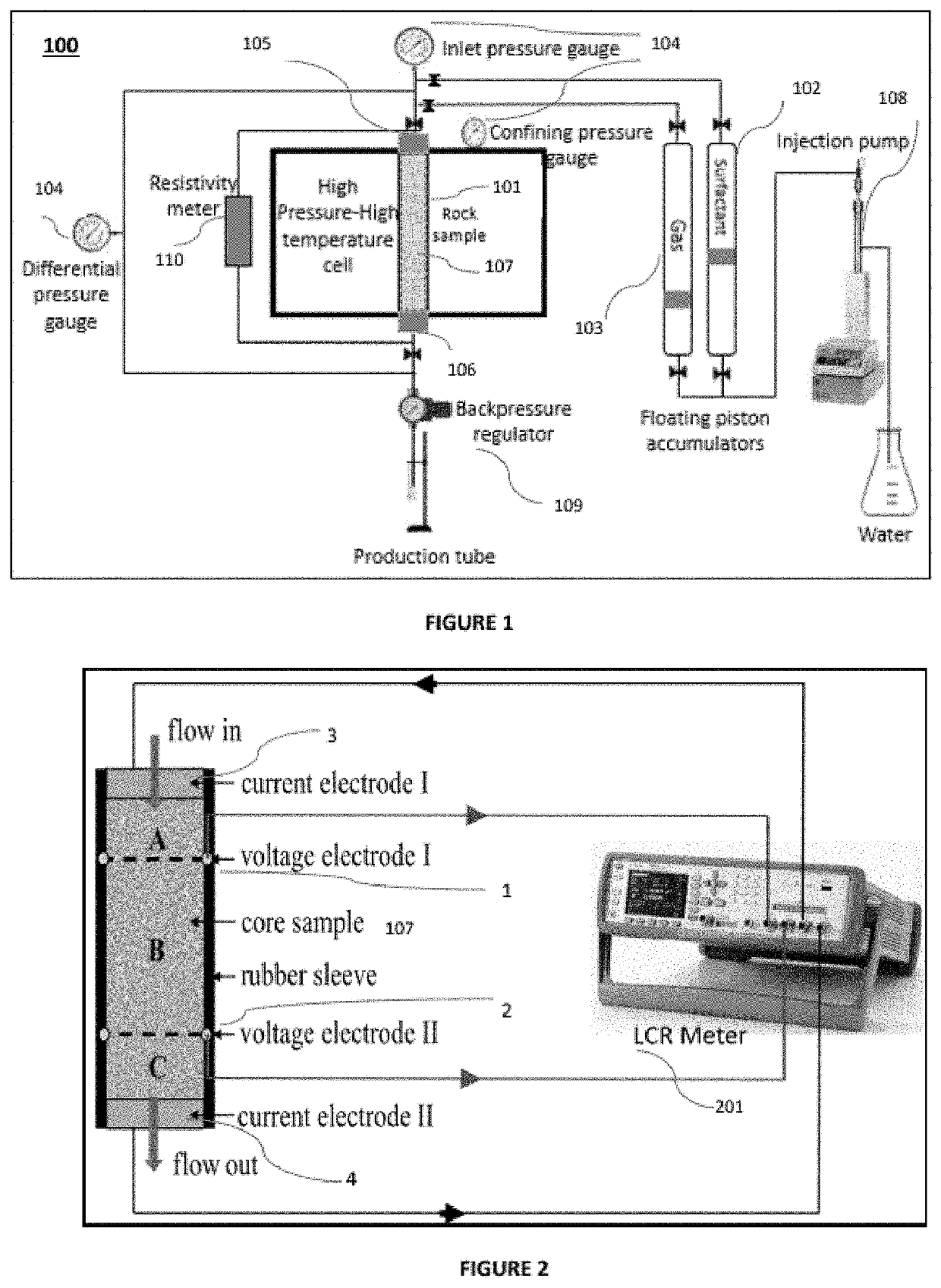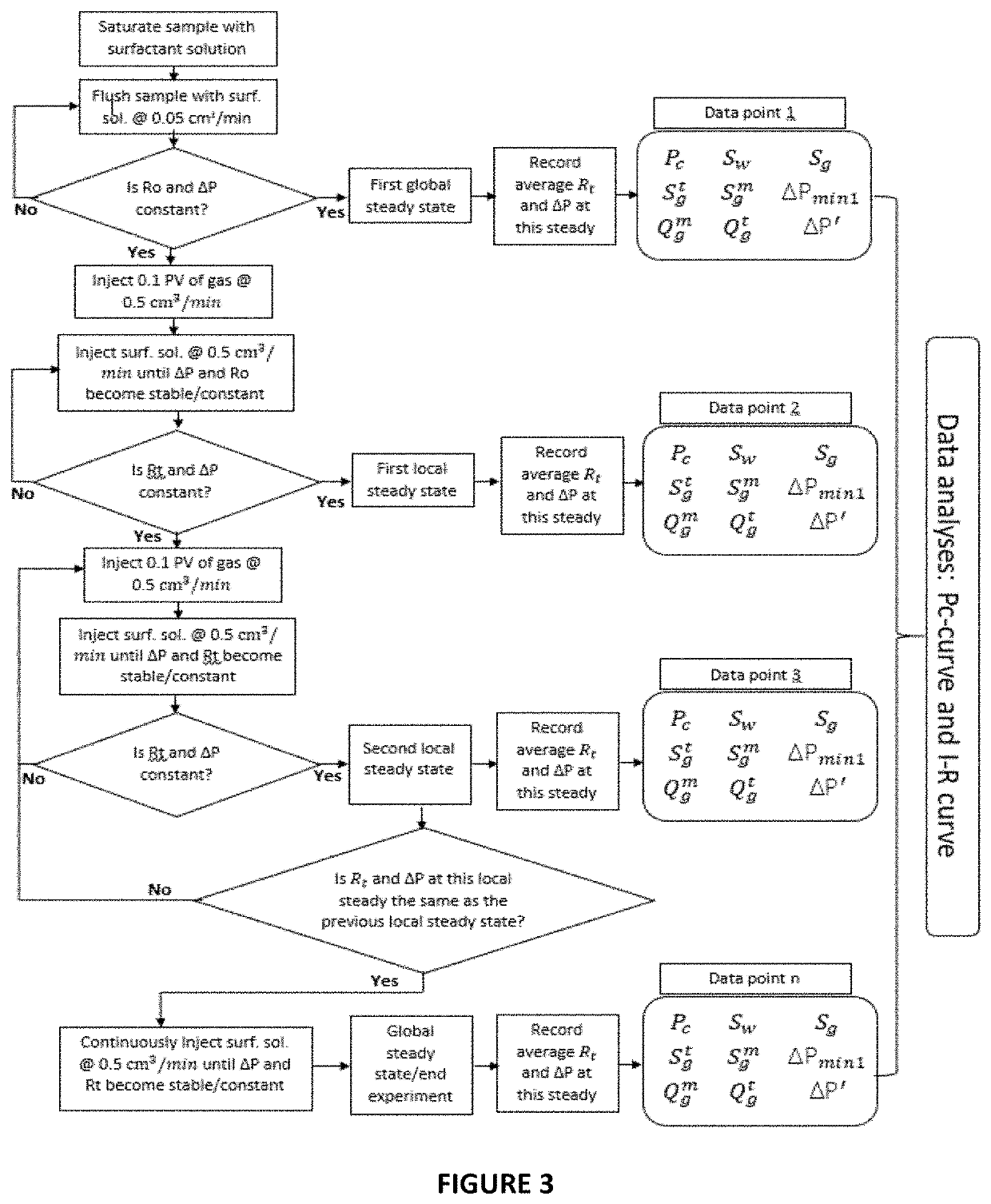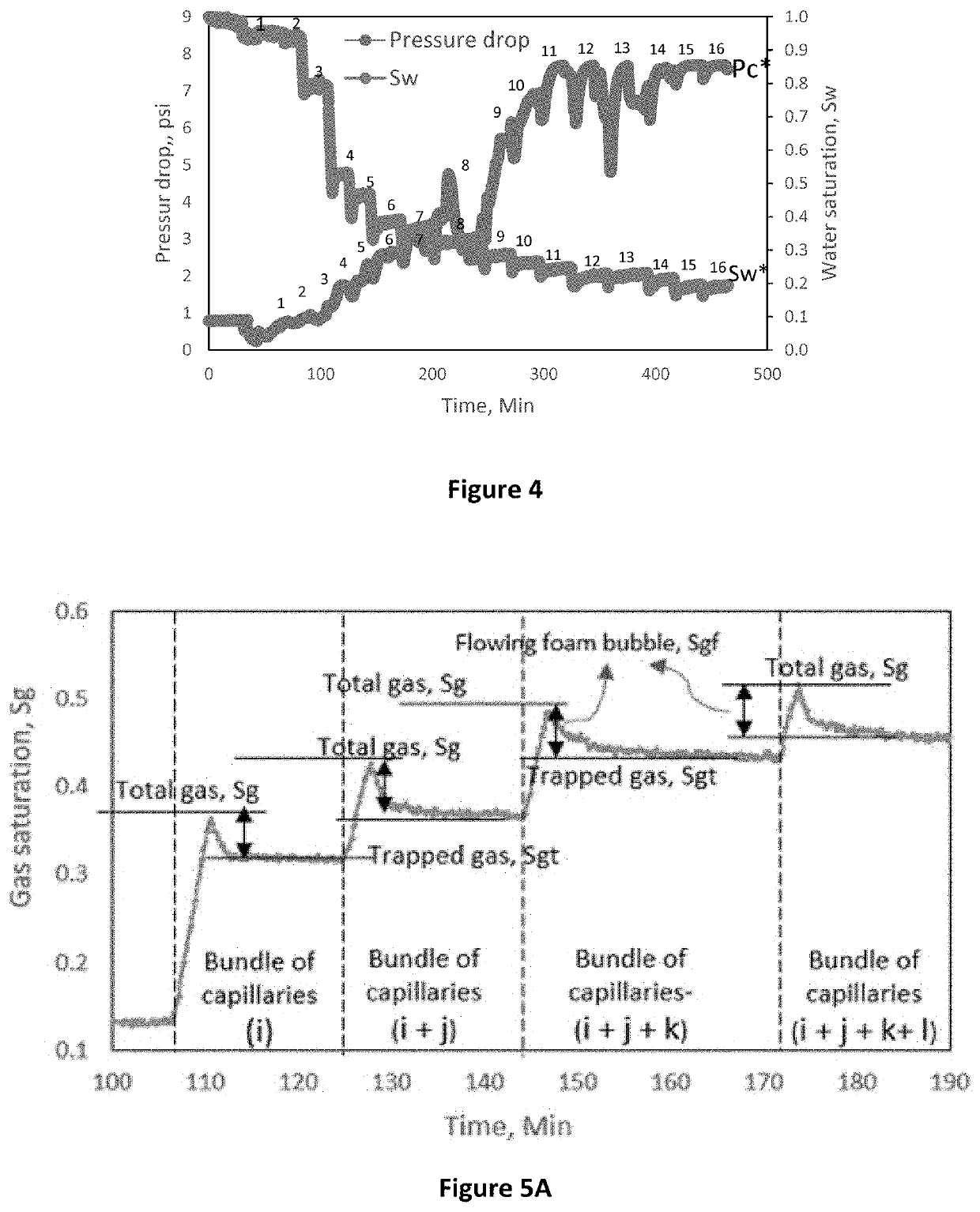Method and apparatus for measuring capillary pressure and foam transport in porous media
a technology of capillary pressure and foam transport, which is applied in the direction of instruments, nuclear magnetic resonance analysis, and wellbore/well accessories, etc., can solve the problems of inability to measure the capillary pressure before, unsuitable or inaccurate simulating transient foam flow, and inability to accurately simulate the foam trapping process. , to achieve the effect of high resolution
- Summary
- Abstract
- Description
- Claims
- Application Information
AI Technical Summary
Benefits of technology
Problems solved by technology
Method used
Image
Examples
example
[0058]A test sample of cylindrical rock (10.6 cm long and 3.76 cm in diameter) was extracted from an Indiana limestone outcrop (with porosity of 15% and brine permeability of 5mD). The sample was cleaned by flushing with methanol in a Soxhlet apparatus at 80 ° C. for three days in order to remove any salt deposits that may be in its pores. It was then dried in a vacuum oven for 24 hours in order to dry and evacuate the pores. The sample was then saturated with a brine solution containing dissolved surfactant. Saturation was conducted by vacuum method after which the sample porosity and pore volume were estimated based on the difference of it's dry and saturated weights. Synthetic brine solution of 58,000 ppm was formulated in the lab using salt compositions similar to those found in typical reservoir water. A surfactant solution containing 0.025% weight concentration of surfactant dissolved in brine was also prepared. The surfactant used is a non-ionic ethoxylated fluorocarbon surfa...
PUM
| Property | Measurement | Unit |
|---|---|---|
| temperature | aaaaa | aaaaa |
| temperature | aaaaa | aaaaa |
| temperature | aaaaa | aaaaa |
Abstract
Description
Claims
Application Information
 Login to View More
Login to View More - R&D
- Intellectual Property
- Life Sciences
- Materials
- Tech Scout
- Unparalleled Data Quality
- Higher Quality Content
- 60% Fewer Hallucinations
Browse by: Latest US Patents, China's latest patents, Technical Efficacy Thesaurus, Application Domain, Technology Topic, Popular Technical Reports.
© 2025 PatSnap. All rights reserved.Legal|Privacy policy|Modern Slavery Act Transparency Statement|Sitemap|About US| Contact US: help@patsnap.com



